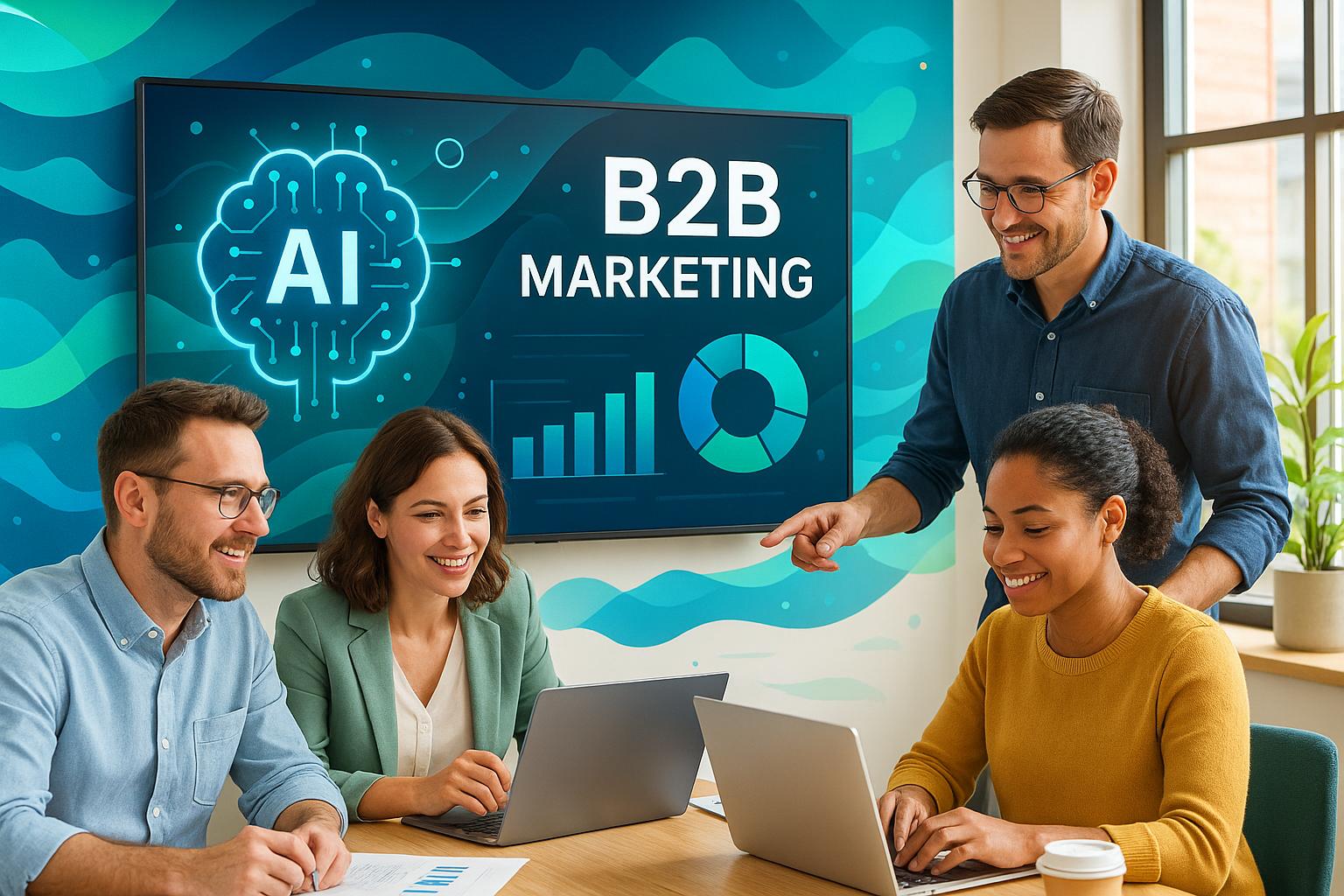
In today’s fast-paced and highly competitive B2B landscape, artificial intelligence (AI) is no longer just a buzzword - it's a transformative force that's reshaping how businesses achieve growth. For financial advisors, fractional CFOs, wealth managers, certified public accountants (CPAs), fintech firms, and CFOs alike, the potential of AI to optimize marketing pipelines and streamline operations is immense. But how can these professionals strategically harness this technology to drive revenue while maintaining efficiency?
In this article, we’ll break down insights from top marketing leaders who are already deploying AI to revolutionize their workflows. You’ll learn practical examples of how AI is being applied to content creation, pipeline management, and customer engagement, along with strategies for scaling these initiatives effectively.
Generative AI has infiltrated nearly every aspect of marketing, from campaign planning and content creation to sales enablement and analytics. As Kevin Ruane, CMO of Precisely, aptly put it, "AI is fundamentally changing everything for B2B marketing."
The adoption of AI offers a solution to one of the most persistent challenges facing businesses: doing more with less. By streamlining workflows and enabling hyper-personalization at scale, AI allows companies to execute sophisticated marketing strategies without requiring exponential increases in resources.
For businesses that operate with complex portfolios or serve multiple verticals, AI offers a powerful mechanism to overcome operational silos and scale their efforts efficiently. However, the key lies in understanding where and how to apply this technology to generate maximum impact.
One of the most immediate ways AI is transforming B2B marketing is by democratizing content creation. Traditional content production, which often required specialized teams and significant time investment, is now being replaced by smarter, AI-assisted workflows.
Jeff Morgan, CRO of Elements, shared that AI tools like Descript and Claude have allowed his team to produce high-quality content at a fraction of the time. For example:
By leveraging these tools, businesses can focus on quality while scaling their outreach efforts. AI ensures brand consistency, compliance with regulations, and effective personalization - all without compromising efficiency.
For B2B companies, pipeline health is directly tied to revenue. AI can serve as the "central nervous system" for pipeline management, monitoring every stage of the buyer’s journey in real time.
Gary Savance, CMO of Simpler, emphasizes the power of combining AI with engagement data and intent signals. By automating the identification of stalled deals, assessing conversion rates, and tailoring outreach efforts, AI enables businesses to:
However, achieving this level of pipeline intelligence requires integrating disparate data sources, such as CRM systems, third-party intent platforms, and marketing automation tools. While this might sound daunting, a phased approach - focusing on the most impactful data sources first - can deliver quick wins while laying the groundwork for long-term success.
Introducing AI into a business requires more than just tools; it demands a cultural shift. Kevin Ruane highlighted how change management is vital for fostering an "AI-first" mentality within teams.
For example:
To maximize adoption, leadership must inspire teams to embrace AI as an opportunity rather than a threat. As Ruane noted, "Those who take ownership of their careers and embrace change will thrive. Those who don’t will struggle and be left behind."
While tools like ChatGPT, Claude, and Descript are powerful, they are only as effective as the strategy behind them. AI adoption should be guided by clear objectives:
AI impacts multiple departments, from marketing and sales to customer service. Creating a unified strategy that involves stakeholders across functions ensures that AI’s full potential is realized.
To foster an AI-first organization, leaders must invest in training employees to use new tools effectively. This not only enhances productivity but also future-proofs the workforce against industry disruption.
The integration of AI into B2B marketing strategies is no longer optional - it’s a necessity for businesses looking to scale efficiently while remaining competitive. For financial professionals and fintech firms, AI offers an unprecedented opportunity to optimize operations, hyper-personalize marketing, and drive growth. But as with any transformative technology, success depends on thoughtful implementation, cross-functional collaboration, and a commitment to continuous learning.
As we look to the future, it’s clear that AI will not replace marketers, but marketers who leverage AI will replace those who don’t. Now is the time to embrace this exciting new frontier and lead your organization into the AI-driven era of B2B marketing.
Source: "AI’s Impact on B2B Marketing Strategy | Renegade Marketers Unite #472" - Renegade Marketing Hub, YouTube, Aug 22, 2025 - https://www.youtube.com/watch?v=rojhLCFluzU